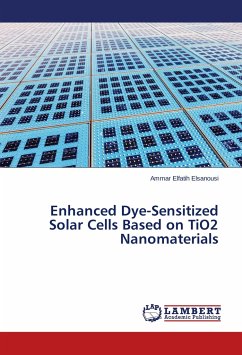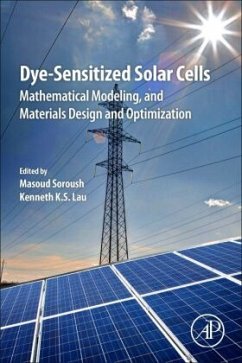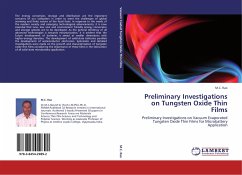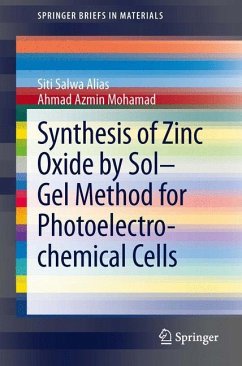
Zinc Oxide Nanocrystalline Thin Films: Dye sensitized Solar Cells
Chemical Synthesis of Zinc Oxide: Solar Cells
Versandkostenfrei!
Versandfertig in 6-10 Tagen
39,99 €
inkl. MwSt.

PAYBACK Punkte
20 °P sammeln!
Zinc oxide (ZnO) is a iconic semiconductor oxide due to its wide direct band gap of 3.3 eV and large exciton binding energy of 60 meV at room temperature, high electron mobility (155 cm2.V-1.S-1), ZnO is recognized as a promising optoelectronic material in the blue-ultraviolet (UV) region and an excellent candidate for a dye-sensitized oxide semiconductor solar cell and field emitter. By controlling the reaction conditions during heterogeneous deposition of ZnO from aqueous solutions, tunable nanostructures have been readily fabricated. The potential application of nanomaterials depends on the...
Zinc oxide (ZnO) is a iconic semiconductor oxide due to its wide direct band gap of 3.3 eV and large exciton binding energy of 60 meV at room temperature, high electron mobility (155 cm2.V-1.S-1), ZnO is recognized as a promising optoelectronic material in the blue-ultraviolet (UV) region and an excellent candidate for a dye-sensitized oxide semiconductor solar cell and field emitter. By controlling the reaction conditions during heterogeneous deposition of ZnO from aqueous solutions, tunable nanostructures have been readily fabricated. The potential application of nanomaterials depends on the shape of nanostructure, and controlled morphology can modulate the properties of nanomaterials. Hierarchical ZnO nanostructures reported here might provide a good candidate for solar cells, gas sensor and field emission applications. In the book we have reported synthesis of 0D, 1D, 2D, 3D and multidimensional ZnO nanostructures like nanoparticles, nanorods, nanoneedles, nanotowers, nanoflowers, nanosyringes, bottle brush, cake and cactus-like by aqueous chemical route at relatively low temperature and cost. The synthesized nanostructures have been used for dye and quantum dot sensitized sola












